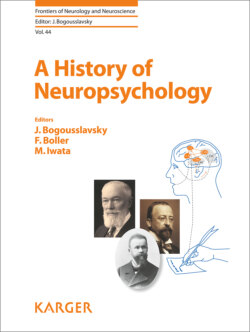Читать книгу A History of Neuropsychology - Группа авторов - Страница 24
На сайте Литреса книга снята с продажи.
Localization of Symptoms or Localization of Function?
ОглавлениеAlong with his reports on imperception, Hughlings-Jackson [38] made another signal contribution. He identified what he saw as a common error in interpreting clinical data: speech loss following F3 damage on the left was widely taken to mean that speech was located there. The error lay in equating localization of symptoms with localization of function:
Whilst I believe that the hinder part of the left third frontal convolution is the part most often damaged (when speech is lost), I do not localize speech in any such small part of the brain. To locate the damage which destroys speech and to locate speech are two different things ([30], p 81).
Hughlings-Jackson instead saw speech, and language more generally, as a dynamic process involving the integrated functioning of the whole brain, such that the more complex the task, the more regions involved, each contributing in its own way. The question was not, where is language located, it was, what is each region’s contribution? His answer was that language is represented in both hemispheres at different functional levels: Emotional utterances (the lowest level) were the least lateralized, or most bilateral, which explained the preservation of “emotional speech,” such as oaths and other “automatic,” “involuntary” phrases in persons with aphasia, persons like Leborgne. Comprehension was more lateralized, and “propositional speech” (the highest level), together with the background of conceptual thought it requires, depended wholly on the left hemisphere.
